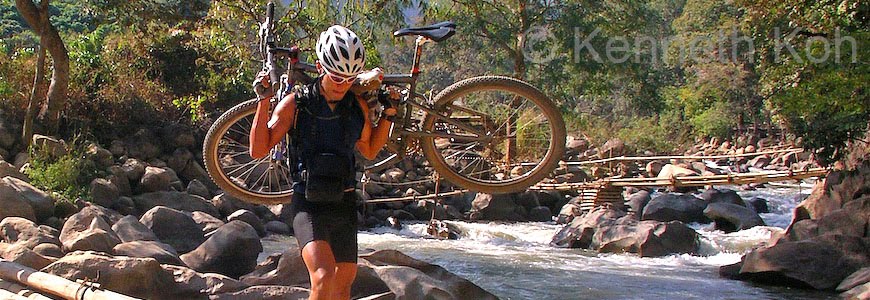UPDATE: With the exception of the liver tablets, I no longer take or recommend these supplements. Please standby for an updated post to find out what's working better for me in 2014.
Since my earlier post: Nutritional Supplements For Climbing Mt. Everest, I've learned a lot, and what I now take is significantly different, hence the need for this update. I under-dosed a lot of the supplements in my previous post, and they didn't have the desired results. Here's what I'm taking each day and am bringing to Everest. As lunch is usually on-the-go, I take these in divided doses during breakfast and dinner:
Mutivitamin x 2 - Now Adam (I've tried a lot of multis. These are cheap, simple and work well for me)
Fish Oil x 4 - Controlled Labs OxiMega (double strength fish oil, reduces inflammation, 'thins' the blood, and serves as fuel)
Probiotics x 1 - Now Stabilized Acidophilus (needs no refrigeration)
Antioxidants x 2 - Now Super Antioxidants (phytoflavonoid formula. Sometimes I don't get enough fruit and veggies)
Liver Tablets x 4 - Beverly Ultra 40 (for red blood cell production, boosts amino acid profile, and can serve as fuel. I'll carry some extra (up to 12 per day) of these as well)
Vitamin C x 1 - Now Vitamin C-1000 (antioxidant, and reduces cortisol at night)
Mitochondria Energizer x 1 - Jarrow MityQondria CoQ10 (keeps the mitochondria fired up and become more efficient at producing energy)
Glucosamine x 1 - GNC TriFlex (joint care)
I also carry some digestive enzymes and use as required (if I have to eat a lot of carbo (rice, pasta, breads), I get gas, and the digestive enzymes help with that): Now Super Enzymes (the tablets work better than the capsules).
Specically for Everest, I'm also taking these adaptogens to help with better oxygen utilization and performance:
Garlic x 1 - GNC Triple Garlic
Ginkgo/Eleuthero x 1 - GNC Gingko Biloba Plus
Optygen HP x 4 - on climbing days
Fuel and Recovery:
Since my earlier post: Nutritional Supplements For Climbing Mt. Everest, I've learned a lot, and what I now take is significantly different, hence the need for this update. I under-dosed a lot of the supplements in my previous post, and they didn't have the desired results. Here's what I'm taking each day and am bringing to Everest. As lunch is usually on-the-go, I take these in divided doses during breakfast and dinner:
 |
| Yum! Goes well with Argentinian steak. Photo by Jamie McGuiness |
Fish Oil x 4 - Controlled Labs OxiMega (double strength fish oil, reduces inflammation, 'thins' the blood, and serves as fuel)
Probiotics x 1 - Now Stabilized Acidophilus (needs no refrigeration)
Antioxidants x 2 - Now Super Antioxidants (phytoflavonoid formula. Sometimes I don't get enough fruit and veggies)
Liver Tablets x 4 - Beverly Ultra 40 (for red blood cell production, boosts amino acid profile, and can serve as fuel. I'll carry some extra (up to 12 per day) of these as well)
Vitamin C x 1 - Now Vitamin C-1000 (antioxidant, and reduces cortisol at night)
Mitochondria Energizer x 1 - Jarrow MityQondria CoQ10 (keeps the mitochondria fired up and become more efficient at producing energy)
Glucosamine x 1 - GNC TriFlex (joint care)
I also carry some digestive enzymes and use as required (if I have to eat a lot of carbo (rice, pasta, breads), I get gas, and the digestive enzymes help with that): Now Super Enzymes (the tablets work better than the capsules).
Specically for Everest, I'm also taking these adaptogens to help with better oxygen utilization and performance:
Garlic x 1 - GNC Triple Garlic
Ginkgo/Eleuthero x 1 - GNC Gingko Biloba Plus
Optygen HP x 4 - on climbing days
Fuel and Recovery:
- While climbing, I use Hammer Nutrition Perpetuem, which uses soy protein instead of whey, and does not contribute to ammonia load. Perpetuem comes in both solids and powder. I prefer the powder which dissolves into my water bottles. If I need solid food, I use Hammer Bars.
- Post climb, I recover with Hammer Nutrition Recoverite.
- I'll also bring some MRP (Meal Replacement Powder), to help maintain my bodyweight while on the mountain.









